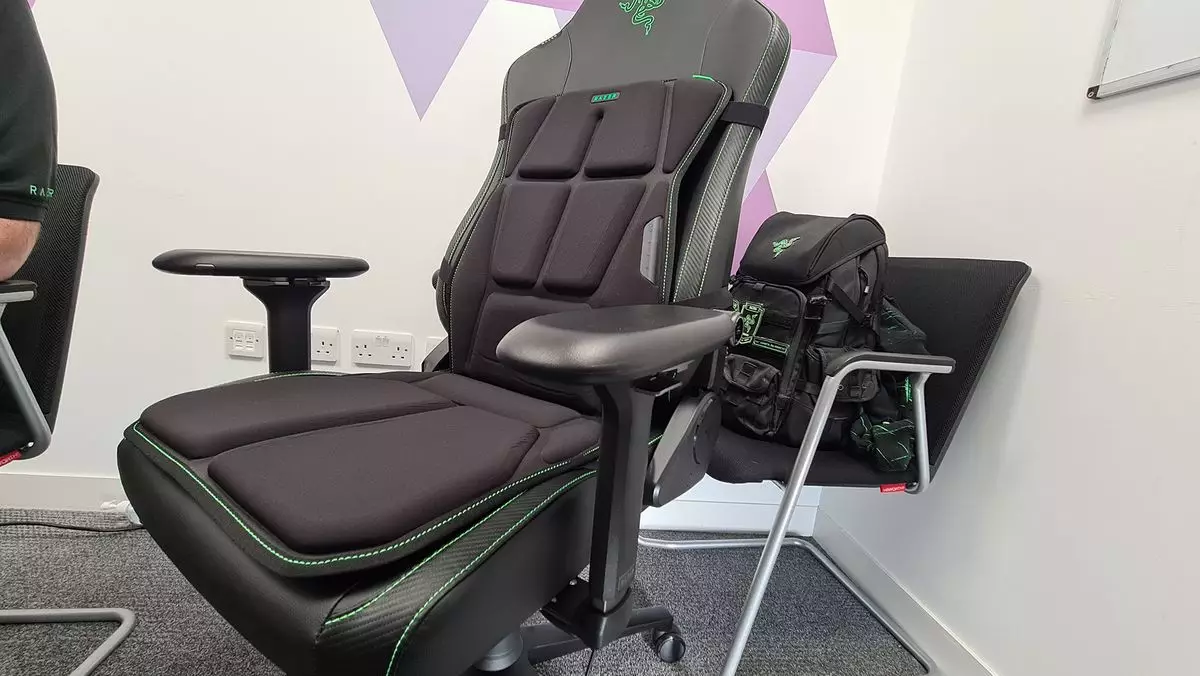Razer, known for its commitment to enhancing gaming experiences, has ventured into new territory with its latest product, the Razer Freya Gaming Cushion. This intriguing haptic device aims to deepen immersion in gaming by simulating tactile feedback through vibrations in response to in-game actions and sounds. The rationale is straightforward: when you feel the game through vibrations in various parts of your body, your connection to the virtual world becomes more profound. But does it live up to the promise, or is it merely a gimmick?
Understanding the Basics: What is the Razer Freya?
The Razer Freya functions as a cushion that can be attached to most gaming chairs using adjustable straps. It features six haptic feedback zones, each with an embedded motor. Upon connecting it to a power source, the cushion is designed to rumble in sync with game audio or actions, complementing the visual and auditory aspects of gaming. The idea enhances the overall gaming experience, making players feel as though they are part of the action.
Razer highlights that Freya is unique in the haptic spectrum, given that haptic vests and chairs are already available, but a gaming cushion like this is a first. While the innovation is captivating, one has to wonder how effective this tactile stimulation truly is in a crowded market of haptic devices.
Test Drive: The Experience Behind the Haptics
In a hands-on demonstration, I had the opportunity to try the Razer Freya attached to a Razer gaming chair while playing *Final Fantasy XVI*. The setup was simple enough: strap it to the chair, power it up, and select a game supported by the cushion’s haptic feedback. With *Final Fantasy XVI* loaded, the motorized pads triggered a wave of vibrations as I executed attacks, casting spells, and performing combat maneuvers.
The sensory experience was relatively immersive at first. The vibrations were notably responsive, as different actions caused actions in distinct areas of the cushion. The feedback felt orchestrated, connecting my in-game maneuvers to the physical sensations in the seat. However, the initial thrill began to diminish after prolonged use. While it was exciting in bursts, the unique sensations blended into a singular rumbling mass, lessening the intricacy of the individual haptic responses.
As a fan of simulation racing games, I pondered the Razer Freya’s application in that context. The potential integration into a sim racing setup is enticing. Imagine securing this cushion to a racing seat in a Playseat with high-quality feedback wheels—creating an engrossing experience worthy of a full-motion simulation rig without needing to invest tens of thousands. The Razer Freya could offer a layer of tactile feedback that normal gaming chairs lack, but it may still steer clear of the ultimate immersion that advanced setups provide.
Nonetheless, haptic feedback varies dramatically with different genres, which makes it imperative for users to assess how well this cushion would perform in titles outside of action RPGs. Imagine coupling it with horror games or fast-paced shooters; the effectiveness could either soar or diminish dramatically, depending on how developers program support for the device.
Despite the intriguing technology behind the Razer Freya, the price tag of $300 raises questions regarding its value proposition. For enthusiasts seeking cutting-edge technology, the cushion may seem like an enticing addition to their setup—not unlike other premium gaming accessories. However, for gamers who demand reliable, immersive feedback without the financial outlay, it might be hard to justify the expense.
Moreover, during my experience, even pairing it with Razer’s haptic headset, the Kraken V4 Pro, left me feeling underwhelmed. I longed for a more dynamic interaction between audio and haptic responses. Despite a robust bass track that fans generally rave about, the sensation felt more akin to an overly loud environment rather than the immersive cocoon it promises.
Final Thoughts: A Niche Product or the Future of Gaming?
Ultimately, the Razer Freya appears to be an engaging innovation, yet it may not resonate universally with the gaming community. Its unique approach to haptic feedback could certainly carve a niche for itself, possibly appealing to those who prioritize immersive experiences in specific genres or setups. However, the lack of broader, convincing value may leave others contemplating its worth.
The Razer Freya haptic gaming cushion raises intriguing possibilities in the realm of gaming stimulation but, for the time being, remains a curious experiment waiting for greater widespread appeal or a major breakthrough in practical integration. For gamers keen on enhancing their setup, it might be worth exploring, but perhaps with tempered expectations.

